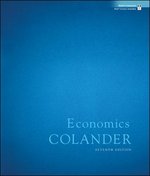Hi I am stuck on a question. Can you please provide some insight. Thanks:
Given the information in the below article, explain, in economic terms and using the AD/AS framework, how Australia avoided negative economic growth during the global financial crises.
Australia's economy - Good on you "Australia has weathered the China slowdown and commodities slump well. What has It done right?\" Unlike most of the rich world, it [Australia] sailed through the global nancial crisis, and unlike most commodity exporters, it has weathered the raw-materials price slump. Its GDP growth rate of 3.1% dwarfs that of America and the euro zone. ......... The story of Australia's success starts with what its government did not do: spend beyond its means. Tight budgets in the late 1990s and early 2000s, combined with improving terms of trade, meant that when the nancial crisis hit, the government was running budget surpluses (though the country as a whole has a long-running cu rrent-account decit). It could thus afford stimulus packages in late 2008 and early 2009 worth more than AS506 billion (US$423 billion) [recall that a large proportion of the stimulus was given to consumers directly]. Only China provided greater stimulus as a share of GDP. ...... The Reserve Ba nk of Australia (RBA) estimates that, during that period, mining raised reai disposable household income by 13% and wages by 6%, boosting domestic purchasing power. Saul Eslake, an independent economist, argues that "except for the Chinese people, no country derived more benet from the growth and industrialisation of China" than Australia. The value of the Australian dollar also rose, which dented non-mining exports. But since demand from Asia kept prices high for Australia's agricultural commodities (such as beef and wheat), and because it exports relatively few manufactured goods, the damage was contained. As China rebaianced and commodity prices tumbled, other exporters such as Russia, South Africa and Brazil fell into recession. In Australia, although business investment has fallen sharply, GDP growth remains near its 25year average of 3% (and as a side benefit, the commodity-price fall quelled rising inflation). For that, thank two factors. First, the rise in mining investment during the fat years led to increased production. Commodity exports have continued to grow (albeit modestly and less protably). Though prices of iron ore and coal are well below the past decade's peaks, they remain above pre~boom levels. More important, Australia let the dollar depreciate, which made its exports more appealing. Today Australia benets from a growing number of Chinese consumers, who buy Australian food products that are widely seen as safer than their home-grown equivalents







